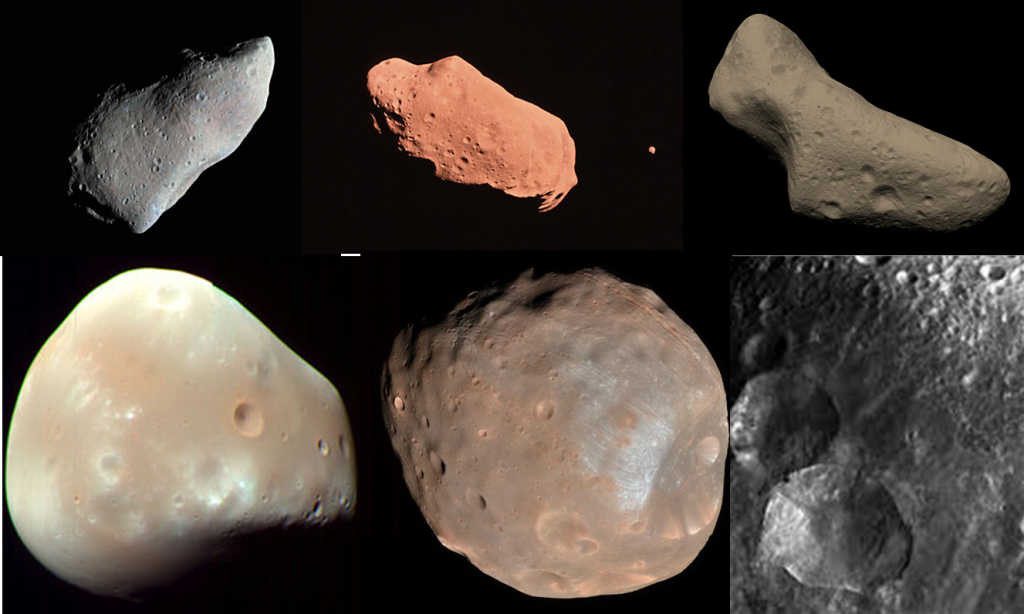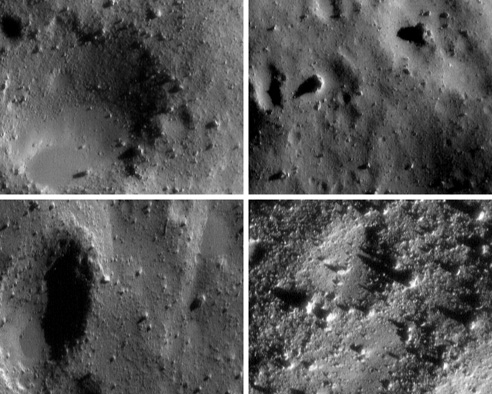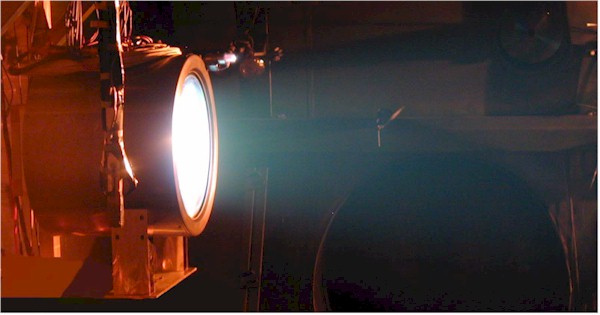In April 2012 a team of industry leaders formed a new company, Planetary Resources to launch robotic space missions to mine the natural resources to be found in space. The company’s announcement coincided with the latest revelations from the NASA Dawn mission to study two of the largest asteroids in the Solar System, Vesta and Ceres. The discoveries from the NASA mission are not about the economic value of asteroids. NASA is investigating asteroids to understand how our Solar System first formed.
Why Our Solar System Has An Asteroid Belt
The Asteroid Belt consists of rocky debris unevenly distributed in the zone between the planets Mars and Jupiter. This is not the only place where asteroids exist. Asteroid clusters can be found along both Jupiter and Mars’ orbital plane in front and behind the planets at specific points far enough away from them to remain reasonably stable. These asteroids are called Trojans. Other asteroids can be found at similar points along the orbital plane of Neptune. And some asteroids have odd orbits that take them near Earth. In fact scientists estimate neary 9,000 asteroids larger than 50 meters (over 150 feet) cross the orbit of our planet. These are the type of asteroids that pose a potential collision threat with our planet, the type of asteroid that has been associated with the mass extinction event of 65 millions year ago.
Why did asteroids form? Scientists theorize that the Asteroid Belt and Trojans represent the debris of the early Solar System. The Belt itself is believed to represent a zone within the Solar System that failed to form a planet because of the proximity of Jupiter with its massive gravitational pull. The normal gravitational accretion that led to Mars and Earth was stopped by Jupiter.
The Asteroid Belt itself is very thinly populated even though there are millions of these rocky chunks. We have discovered 220 larger than 100 kilometers (62 miles) in diameter of which the largest is Ceres, with a diameter of approximately 1,000 kilometers (620 miles). Total mass of all of the asteroids in the belt is estimated to be about 4% of our Moon with Ceres accounting for 1/3 of the total. Asteroids are unevenly distributed through the Belt. This was first observed in 1886, caused by resonances with Jupiter’s orbit, and named Kirkwood Gaps after the discoverer of the phenomenon. This uneven and thin distribution has made it much easier to launch missions to the outer planets with little in the way of actual debris posing a hazard to spacecraft.

In one mission, Galileo, the spacecraft actually rendezvoused with two asteroids, Gaspra and Ida, while on the way to Jupiter. Gaspra was potato shaped, riddled with craters and 19 kilometers (approximately 11 miles) in length. Ida looked similar and was 52 kilometers (approximately 33 miles) in length and even had its own moonlet named Dactyl, a fragment 1.5 kilometers (less than a mile) across. Dactyl circles Ida at a distance of 100 kilometers (62 miles). The two moons of Mars, Phobos and Deimos, (see image of Phobos below) appear to be asteroids captured by that planet’s gravity in the distant past.How long have asteroids been around? 4.6 billion years, as old as the Solar System itself. We have been observing them through Earth-based telescopes since the early 19th century. William Herschel was the first to coin the word asteroid to describe them. Spectroscopic analysis allows us to remotely determine their composition. Three-quarters of asteroids are carbonaceous chondrites, that is they are carbon-rich. The majority of the remainder are stony and metallic with many reddish in colour indicating the presence of large deposits of iron.
We Send Robot Spacecraft to Visit Asteroids
NEAR
In 1996 NASA launched the NEAR (Near Earth Asteroid Rendezvous) mission, a robotic spacecraft programmed to rendezvous with two asteroids, the first Mathilde, and the second Eros. In 1997 NEAR made its closest approach to Mathilde, viewing it from about 1,200 kilometers (750 miles). This provided scientists at John Hopkins University with a first close up look at a carbonaceous asteroid. Mathilde appeared as black as soot in images transmitted to Earth.
In February of 2000 NEAR rendezvoused with Eros, a 34 kilometer (21 miles) long asteroid and began a a year-long orbit around it at altitudes that varied from 3.2 kilometers (2 miles) to 52 kilometers (35 miles). In February 2001, although not a lander, NEAR descended to the surface of Eros providing detailed images of the asteroid’s surface.

Before NEAR it was thought that asteroids were metallic or carbonaceous rubble. Eros turned out to be neither. It’s rocky composition was similar to the Earth’s crust. It was geologically active with more than 100,000 craters wider than 15 meters (50 feet), many filled with rocky debris and dust to a depth of more than 90 meters (300 feet).
Hayabusa
In 2003 the Japanese Space Agency (JAXA) launched Hayabusa, a research spacecraft designed to rendezvous with an asteroid and return samples from its surface back to Earth. Hayabusa used an experimental ion propulsion system similar to the one deployed by Deep Space 1 in 1998. NASA developed and tested this technology in space for the first time in a mission to a comet in 1998. An ion propulsion system provides pretty tenuous power. In fact, if you were to use it to power a car it would take four days to accelerate from 0 to 100 kilometers (60 miles) per hour. But in space this type of engine creates a steady incremental push to a spacecraft and when operating over months and years provides a very effective propulsion system.
Hayabusa’s target was the near-Earth asteroid, Itokawa. It took two years and one gravity-assisted pass of Earth for Hayabusa to reach the asteroid, travelling over 2 billion kilometers (1.2 billion miles) to its target, 300 million kilometers (180 million miles) from Earth. Once there it studied Itokawa from altitudes between 3 and 20 kilometers (1.8 to 12 miles) touching down twice on its surface in November 2005 to take samples. Hayabusa then began its return to Earth in April 2007 with samples on board. Hayabusa’s sample was retrieved from a reentry capsule in June 2010.

Dawn
The Dawn spacecraft, launched in September 2007, today is orbiting Vesta, the first of the two asteroids it intends to visit between now and 2015. The spacecraft took four years to reach Vesta using a Martian fly by in 2009 to provide gravity assistance in accelerating the spacecraft on a trajectory to the asteroid. Upon arrival at Vesta, Dawn entered into orbit.
Dawn deploys a solar array that extends 19.7 meters (65 feet) to capture the much more tenuous light energy available to it at the distances it is operating in the Solar System. That same solar array provides the power to drive the xenon ion propulsion system, the third time this technology has been successfully deployed.
Dawn’s other technologies include: two framing cameras to provide detailed imaging in visible and infrared light, a gamma ray and neutron detector to measure the composition of each asteroid, a visble and infrared mapping spectrometer to work in association with the cameras to get accurate elevation reads and determine the minerals on each asteroids’ surface, and radio transmitters for sending signals to Earth and detecting gravity field variations.
In July of 2011 Dawn transmitted the first close- up images of Vesta (see the picture of the Snowman craters in the composite image of asteroids above). What it has discovered so far about this asteroid has revised our thinking about the geology of Asteroid Belt objects. For example there is evidence that Vesta first formed in a molten state as evidenced by its iron core. Vesta also has mountains, the largest more than twice the height of Mount Everest. Vesta also has dark, sooty deposits on its surface which appear to have arrived after the asteroid formed, probably delivered by collisions with carbonaceous Asteroid Belt objects. Like Eros, Vesta remains geologically active with its surface constantly being reworked over time as these collisions create debris and dust that settles into craters and narrow gullies that form ridge and valleys across parts of the asteroid.
When Dawn finishes its assignment at Vesta it will move on to its second objective in the Asteroid Belt, Ceres. Arrival is planned for August 2015 where Dawn will take up orbit to study the asteroid the same way it currently is studying Vesta. Ceres will be very different from Vesta. It’s larger and much further out in the Asteroid Belt. Earth observations indicate that it is composed of at least 25% water ice. So in its visit Dawn will give us an entirely different perspective on the composition of asteroids within the Asteroid Belt.
Why Mine Asteroids?
So we know that asteroids come in all shapes and sizes and are composed of everything from ores to ice. Which may explain why a wealthy group of entrepreneurs want to exploit asteroids as resources. A single asteroid could be worth billions of dollars if it were to be mined. And it will require billions of dollars in investment to succeed. The company plans to launch up to five space telescopes within the next two years to search for and identify asteroids of commercial value. Prospecting robotic spacecraft will follow within five to years. These robots will sample and assay target asteroids in preparation for a subsequent mission of robot miners and refiners who will then bring their precious cargo back to Earth. The economics of such a venture requires further study.
But it is far more likely that Planetary Resources will end up creating way stations in space by finding asteroids that are largely made of water, like Ceres but not as big. Water is the commodity that can become a precious resource when broken down into its constituent elements, oxygen and hydrogen. In addition water is life sustaining for any human presence in space. Water harvested in space can lead to Deep Space habitation where humans can provide a string of stops along the way to other destinations in the Solar System and beyond. But there will be many hurdles to overcome for this commercial plan to succeed including issues of legality and the development of whole range of new technology. We’ll explore the topic of the commercialization of space in subsequent blogs. So keep on reading and send me your questions.







